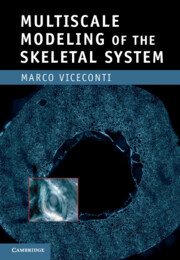1 - Introduction
Published online by Cambridge University Press: 05 January 2012
Summary
An introduction of multiscale modeling of the musculoskeletal system, from a general understanding of what a model is, and of the role that integrationism can play in biomedical research.
Integrative research: a new approach to biomedical research
The primum movens of this book is the emergence, some years ago, of a radically different concept of how biomedical research should proceed. Since the seventeenth century, methodological reductionism has been the principal and most successful approach to the investigation of nature. By this term we mean, “An approach to understanding the nature of complex things by reducing them to the interactions of their parts, or to simpler or more fundamental things.” (Wikipedia, 2008). Although the term and its meaning have been vastly debated, the most common interpretation, which I shall use in this book, is that in order to investigate a complex natural phenomenon we identify its composing parts and investigate each of them separately, pretending that they are independent of each other. Of course, this is not true in general, but in most cases the error we commit in making this idealization is acceptable.
The problem with this approach is that methodological reductionism too frequently becomes causal reductionism, “which implies that the causes acting on the whole are simply the sum of the effects of the individual causalities of the parts” (Polkinghorne, 2007). If we can understand how the parts work, our understanding of how the whole works will follow. In genetics, scientists started to investigate the genes, a fundamental component of the cell, in the hope of understanding how information was passed from one generation to the next (methodological reductionism). After a while, various opinions emerged, arguing that the information encoded in the genes is the only and true “recipe of life,” a position that led to the so-called gene-centered view of evolution, made popular by Richard Dawkins’s masterpiece The Selfish Gene (Dawkins, 1976).
- Type
- Chapter
- Information
- Multiscale Modeling of the Skeletal System , pp. 1 - 19Publisher: Cambridge University PressPrint publication year: 2011



